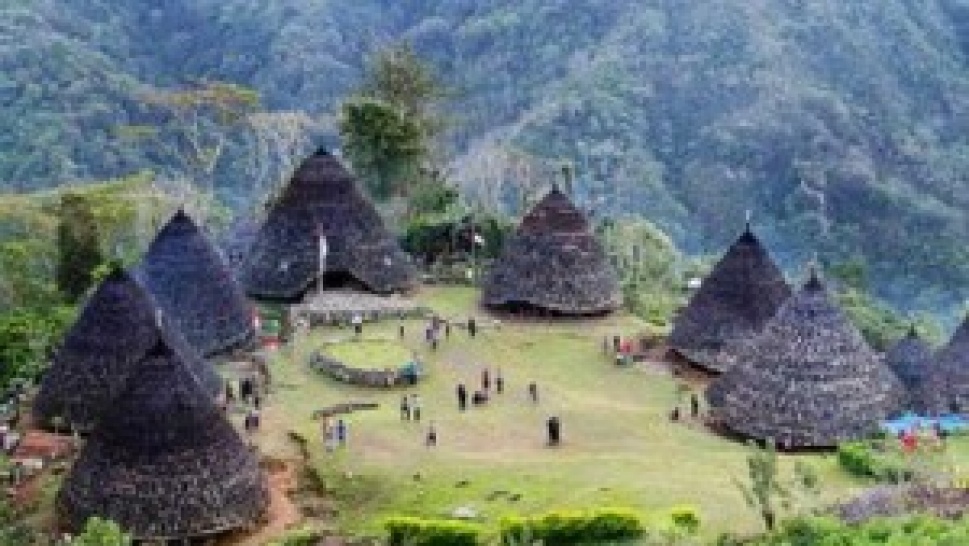Administratively a part of Satarleda Village, West Satarmese Sub-district, Wae Rebo is located 1.100 meters above sea level. The only access to this village is through a 4.5-hours winding, 45-degrees climbing track amidst lush forest. The closest neighboring village is 9 km away. May be it was this unique location that kept the village secret for such a very long time.
The Dutch anthropologist Catherine Allerton was the first outsider who ever reached Wae Rebo in 1997. In 2008, the architect Yori Antar visited the village. The architect initiated re-construction of the traditional houses which were in poor condition at the time. Funding was soon obtained from Tirto Utomo Foundation and businessmen Arifin Panigoro and Laksamana Sukardi. Restoration projects resulted in Award of Excellence from UNESCO Asia-Pacific.
Wae Rebo’s main feature is its traditional houses. Called “mbaru niang,” there are seven houses inside the village. From seven houses, five had been restored with the other two has been accommodated in the Ministry of Education and Culture’s budget. As it is relatively new, visitors are still numbering a meager 670 as of September 2013.
Wae Rebo is accessed after coffee plantations that fill the slopes of a mountain. It is surrounded by hilly areas. The houses form a circular shape. Each house is also shaped in circle with cone roof. The 15-m in diameter main house is called “rumah gendang”, inhabited by eight families. Another house, called “niang gena,” with 12 m in diameter and the same height as the main house, is a home for six families.
There are 44 families currently living in Wae Rebo. Their main occupation is planting crops such as coffee and clove. Wae Rebo women, besides cooking, are also active in helping men in agricultural duties as well as home-based weaving activities. Villagers believe that these houses are inherited from an ancestor called Grandfather Maro, said to be coming from Minangkabau, West Sumatra.
The center of Wae Rebo is “compang,” a spherical stone in front of the main house. All houses have their door facing “compang.” The stone is believed to be the place for worship nature, ancestors and God. Devotion to those three entities is manifested in many traditional festivities that are routinely held until now.
At Wae Rebo, everything is spherical, from the mountain where the villagers live to their spherical village and houses. Inside the spherical shape, there is fairness.




Share the News